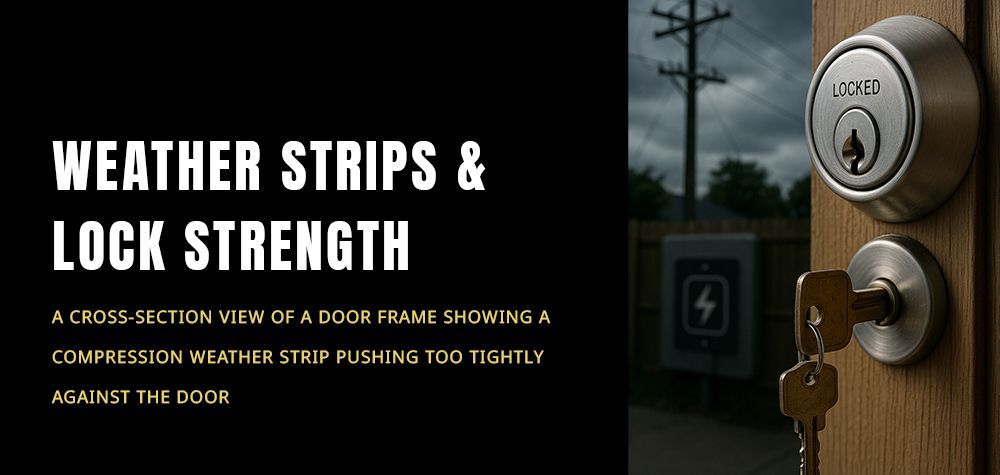How to Fix a Stiff or Hard-to-Turn Lock
A lock that is difficult to turn is not just an inconvenience—it can be a warning sign of deeper issues. Over time, locks can accumulate dust, dirt, and debris, leading to internal friction. Rust and corrosion are common culprits, especially in outdoor locks exposed to moisture. Sometimes, a misaligned door or frame puts pressure on the lock, making it hard to operate. In other cases, a worn-out key or an aging internal mechanism can cause stiffness. Identifying the root cause is the first step toward fixing the issue effectively.
If Nearly All Locks Can Be Picked, Why Do We Still Use Them
Step-by-Step Solutions for a Stiff Lock
1. Clean and Lubricate the Lock
One of the most common reasons for a lock becoming hard to turn is a buildup of grime and lack of lubrication. Start by inserting a key and gently wiggling it to see if there’s any noticeable resistance. If the lock feels gritty, it’s time for a deep clean. Use a can of compressed air to blow out any dust or debris inside the keyhole. Next, apply a graphite-based lubricant, which reduces friction without attracting dust, unlike oil-based lubricants. Insert and turn the key multiple times to distribute the lubricant evenly.
2. Check the Key for Damage
Sometimes, the issue isn’t the lock itself but the key. A slightly bent or worn-out key won’t engage properly with the lock’s pins, causing difficulty in turning. Inspect your key for signs of damage. If it appears worn down or bent, try using a spare key. If the spare key works smoothly, consider getting a new copy made from the original (not from a duplicate, as copies of copies degrade in precision over time).
3. Realign the Door and Strike Plate
A misaligned door can put pressure on the lock, making it harder to turn the key. Check if the door closes properly without resistance. If it doesn’t align correctly with the frame, the latch may not be entering the strike plate smoothly. Tighten any loose hinges and adjust the strike plate by loosening its screws and shifting it slightly to improve alignment. Testing the lock after each adjustment will help you determine if the alignment issue is resolved.
4. Dealing with Rust and Corrosion
For outdoor locks or locks exposed to humidity, rust buildup can cause stiffness. If you suspect rust, apply a rust remover or a mixture of vinegar and baking soda. Let it sit for a few minutes before wiping away the residue with a clean cloth. Follow up with a dry lubricant like graphite powder to ensure smooth operation. If rust has severely damaged internal components, replacing the lock might be the best option.
5. Replace Worn Internal Components
Locks have tiny pins and springs inside that can wear out over time. If cleaning and lubricating don’t solve the issue, disassembling the lock might be necessary. This process is best suited for those comfortable with lock mechanisms. Remove the lock from the door and inspect the internal parts. If you notice any worn-out or broken components, replacing them with new ones can restore the lock’s functionality. If unsure, consult a professional locksmith.
Risks of Ignoring a Stiff Lock
A hard-to-turn lock may seem like a minor annoyance, but neglecting it can lead to bigger problems. Over time, forcing a stiff lock can cause the key to break inside the keyhole, making the issue much harder to resolve. Stiff locks can also lead to sudden lockouts, especially in extreme weather conditions where temperature changes expand or contract metal components. In some cases, a malfunctioning lock can be a security risk, as a compromised lock is easier to tamper with.
Expert Recommendations for Preventing Future Lock Stiffness
To avoid lock stiffness in the future, regular maintenance is key. Experts recommend lubricating locks every six months, especially for exterior locks exposed to the elements. When cleaning locks, avoid using oil-based lubricants that attract dirt and cause buildup over time. If you live in a humid area, periodically check for rust and take preventive measures like using weather-resistant lock covers. Also, always use high-quality keys and avoid excessive force when operating a lock.
Bonus Tips for Ensuring Lock Longevity
Use a Weatherproof Cover: If you have outdoor locks, using a small cover can protect them from rain, dust, and debris.
Duplicate Keys from the Original: Avoid making copies from already duplicated keys, as they lose precision over time.
Test the Lock Seasonally: Temperature changes can impact lock performance, so test locks at the start of each season.
Avoid Excessive Force: If a key doesn’t turn smoothly, resist the urge to force it. Instead, address the root cause of the problem.
Conclusion: A Small Fix Can Save Big Troubles
Fixing a stiff or hard-to-turn lock is often a simple process, but ignoring it can lead to major inconveniences and security risks. By identifying the cause—whether it's dirt, misalignment, rust, or internal wear—you can take the right steps to restore your lock’s functionality. Regular maintenance and prompt action ensure your locks work smoothly, keeping your home or business secure. A well-maintained lock not only provides peace of mind but also extends its lifespan, saving you from costly replacements down the line.
Call Us Any Time!






